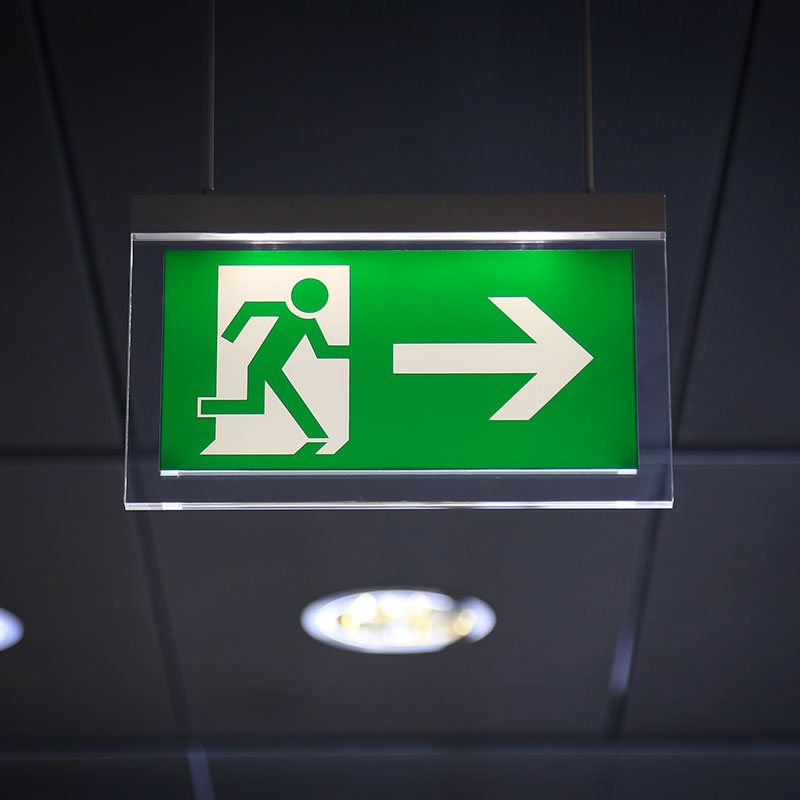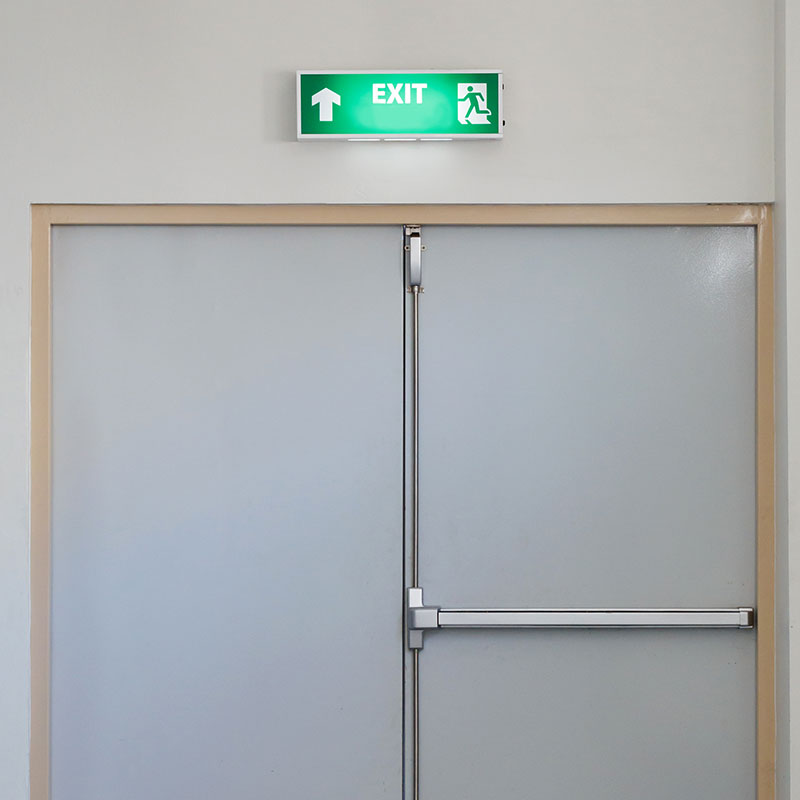

Emergency lighting systems are a legal requirement and an essential part of fire safety measures.
Emergency lighting systems are a legal requirement and an essential part of fire safety measures. The BS 5266-1:2016 code of practice for emergency lighting of premises requires that; all occupied buildings, commercial and residential, have adequate escape lighting to allow for the safe exit of people when your main power supply fails. It is also part of these requirements to ensure that emergency lighting systems are regularly serviced, highlighting any potential faults and providing preventative maintenance, keeping them reliable in case of fire.
If regular lighting fails and visibility becomes limited in an emergency, fire exits should be lit to a minimum of one lux, allowing staff and visitors to evacuate efficiently. The Responsible Person/Duty Holder appointed for fire safety in your building must demonstrate they have acted with due diligence and have sourced a quality provider for these works.
At East Coast Fire Services, we provide emergency lighting systems that are fully compliant. Our engineers can design, install and maintain your systems to the highest standards, ensuring that the emergency exits and escape routes are illuminated in the event of a power failure.


Emergency lighting systems require monthly tests. This test is a short functional test under BS 5266-1:2016. An annual test should be a full rated duration test to ensure that the emergency lights are working and producing an acceptable level of light at the end of the test and must be carried out by a competent person. Once testing is complete, we will issue a report incorporating any malfunctions or recommendations of remedial work required.
BS5266-1 states that emergency light fittings should be able to operate for 3 hours following a mains power failure. 1 hour duration fittings are also permissible, but only if the building will be evacuated immediately in the event of a power failure and not re-occupied till the batteries have been fully recharged.
If regular lighting fails and visibility becomes limited in an emergency, fire exits should be lit to a minimum of one lux, allowing staff and visitors to evacuate efficiently. The Responsible Person/Duty Holder appointed for fire safety in your building must demonstrate they have acted with due diligence and have sourced a quality provider for these works.
At East Coast Fire Services, we provide emergency lighting systems that are fully compliant. Our engineers can design, install and maintain your systems to the highest standards, ensuring that the emergency exits and escape routes are illuminated in the event of a power failure.

Emergency lighting systems require monthly tests. This test is a short functional test under BS 5266-1:2016. An annual test should be a full rated duration test to ensure that the emergency lights are working and producing an acceptable level of light at the end of the test and must be carried out by a competent person. Once testing is complete, we will issue a report incorporating any malfunctions or recommendations of remedial work required.
BS5266-1 states that emergency light fittings should be able to operate for 3 hours following a mains power failure. 1 hour duration fittings are also permissible, but only if the building will be evacuated immediately in the event of a power failure and not re-occupied till the batteries have been fully recharged.

Emergency safety signage is also an essential part of your emergency lighting solution.
Signs should clearly show the exit routes and final exits from the building. In addition, occupants who use the building need to know where each safety device is. Call points, extinguishers, and other firefighting equipment should be illuminated.
We supply, install and maintain:
- Addressable Lighting Systems
- Stand alone Emergency Lighting Units
- Photoluminescent Signage
